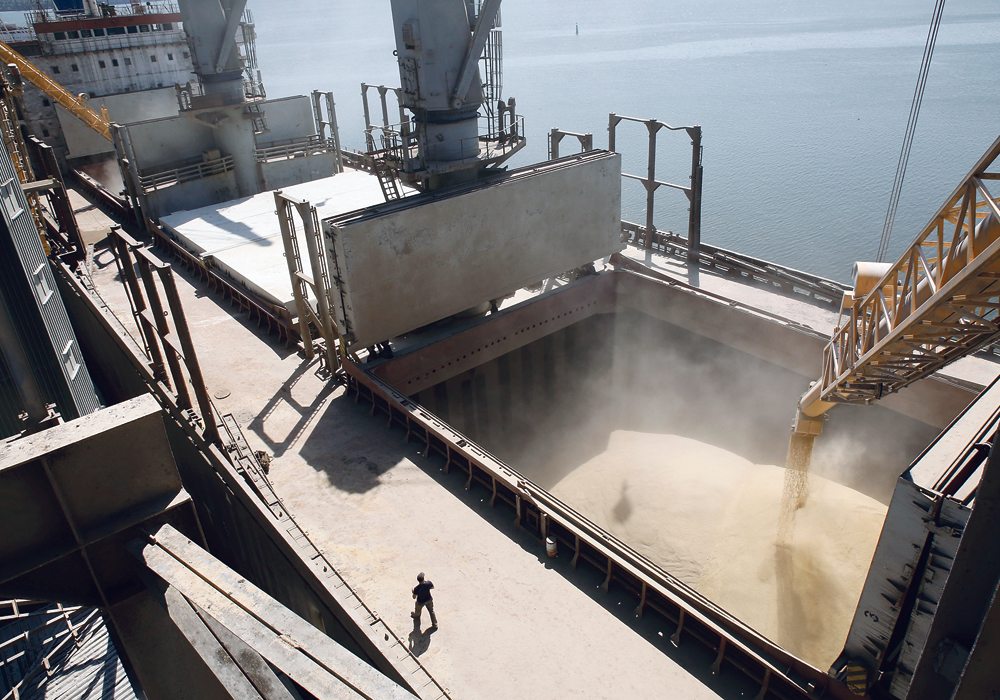The volume of wheat exported from the region would seem to say yes, but political instability is a worry
Who needs Black Sea wheat futures?
And do enough people want them in order to give them the breath of life?
Those questions are floating before world wheat derivative markets following the introduction of a Chicago Black Sea wheat futures contract and the evolution of over-the-counter trading.
In theory, establishing a futures contract based on a zone that ships around one-fifth of the world’s export wheat makes sense.
“The closer you can get to the physical characteristics and the location of the cash market, the less basis risk you’re going to have,” said Jon Driedger, a market analyst with FarmLink Marketing and a former economist with the Winnipeg Commodity Exchange.
Read Also

USDA’s August corn yield estimates are bearish
The yield estimates for wheat and soybeans were neutral to bullish, but these were largely a sideshow when compared with corn.
“But it’s hard to get traction.”
Indeed, the world’s derivative markets are littered with the corpses of theoretically sound futures contracts that just never caught fire and others that got sick and died. Without people trading them, contracts wither and die.
Winnipeg’s ICE Futures exchange admitted the defeat of its wheat futures contract in late 2017, acknowledging the failure of its technically sound contract to serve the hedging and speculating needs of those interested in Canada’s spring wheat crop.
The CME Group’s December-introduced Black Sea wheat futures are designed to accurately reflect cash market prices at deep water ports on the Black Sea, which is where much of the Russian, Ukrainian and Kazakh crops are shipped from.
They are cash-settled, so there is not a threat of delivery to worry some potential users.
The futures introduction follows the development of over-the-counter contracts that some brokers have offered.
Commercial trade out of the Black Sea is enormous, with many expecting the region to become the world’s regular number one export source at some point in the future.
That makes regionally based futures a good idea because right now most hedging and risk management must be done with European Matif futures or Chicago, Kansas City or Minneapolis futures. Those contracts definitely do not represent local conditions in the Black Sea region.
Mike Krueger of the Money Farm in Fargo, N.D., can see Black Sea wheat futures working “if we continue to see North American wheat acreage go down.”
The trend of falling acres in the U.S. and Western Canada means the fundamental basis of North America’s futures is weakening and a North American price might not be the best reflection of world prices.
“As our role in world wheat exports continues to shrink, and assuming that Russia’s … continues to grow, the world will have to pay attention to those futures,” said Krueger.
However, that applies only if people actually trade the Black Sea futures. Not only do new futures contracts always have a tough time gaining enough trade to establish credibility and confidence with potential users, but the Black Sea region suffers from a number of geopolitical issues that make its cash market, exports and financial stability suspect.
Not only are Russia and Ukraine involved in a smouldering military conflict, with Russia having annexed the Crimea and Russia backing ethnic Russian insurgents in eastern Ukraine, but the stability of all three of the region’s major wheat exporting nations is always an open question.
Political instability can create real cash market volatility, and that creates risks to which some hedgers and speculators might not want to be exposed.
On the other hand, some speculators probably want to have Black Sea-based futures to spread and arbitrage against European and North American futures.
A lot of wheat flows out of the Black Sea, but whether that causes a lot of interest to flow into Black Sea wheat futures will take time to see.


















